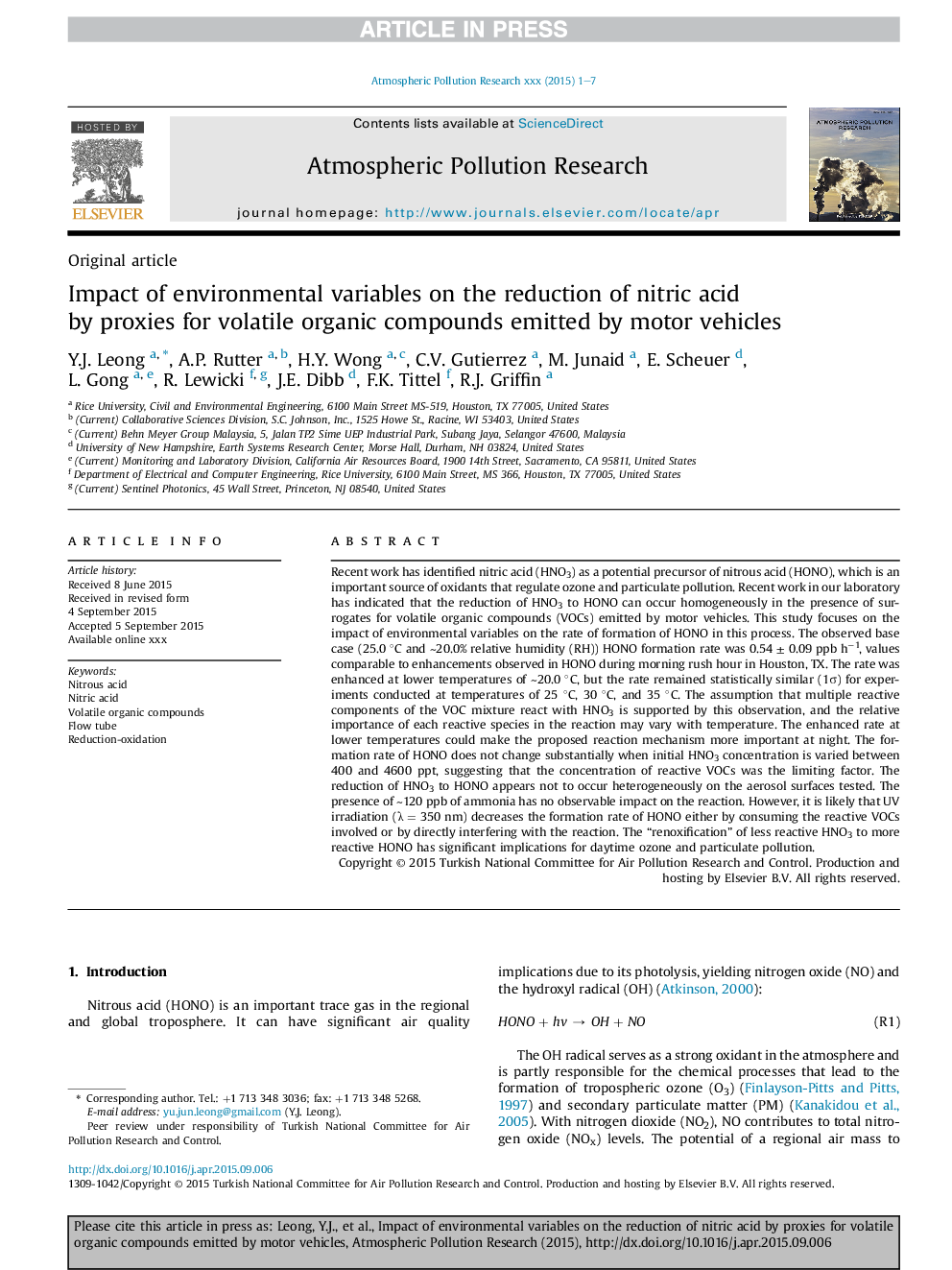| Article ID | Journal | Published Year | Pages | File Type |
|---|---|---|---|---|
| 10179866 | Atmospheric Pollution Research | 2016 | 7 Pages |
Abstract
Recent work has identified nitric acid (HNO3) as a potential precursor of nitrous acid (HONO), which is an important source of oxidants that regulate ozone and particulate pollution. Recent work in our laboratory has indicated that the reduction of HNO3 to HONO can occur homogeneously in the presence of surrogates for volatile organic compounds (VOCs) emitted by motor vehicles. This study focuses on the impact of environmental variables on the rate of formation of HONO in this process. The observed base case (25.0 °C and â¼20.0% relative humidity (RH)) HONO formation rate was 0.54 ± 0.09 ppb hâ1, values comparable to enhancements observed in HONO during morning rush hour in Houston, TX. The rate was enhanced at lower temperatures of â¼20.0 °C, but the rate remained statistically similar (1Ï) for experiments conducted at temperatures of 25 °C, 30 °C, and 35 °C. The assumption that multiple reactive components of the VOC mixture react with HNO3 is supported by this observation, and the relative importance of each reactive species in the reaction may vary with temperature. The enhanced rate at lower temperatures could make the proposed reaction mechanism more important at night. The formation rate of HONO does not change substantially when initial HNO3 concentration is varied between 400 and 4600 ppt, suggesting that the concentration of reactive VOCs was the limiting factor. The reduction of HNO3 to HONO appears not to occur heterogeneously on the aerosol surfaces tested. The presence of â¼120 ppb of ammonia has no observable impact on the reaction. However, it is likely that UV irradiation (λ = 350 nm) decreases the formation rate of HONO either by consuming the reactive VOCs involved or by directly interfering with the reaction. The “renoxification” of less reactive HNO3 to more reactive HONO has significant implications for daytime ozone and particulate pollution.
Related Topics
Physical Sciences and Engineering
Earth and Planetary Sciences
Atmospheric Science
Authors
Y.J. Leong, A.P. Rutter, H.Y. Wong, C.V. Gutierrez, M. Junaid, E. Scheuer, L. Gong, R. Lewicki, J.E. Dibb, F.K. Tittel, R.J. Griffin,
